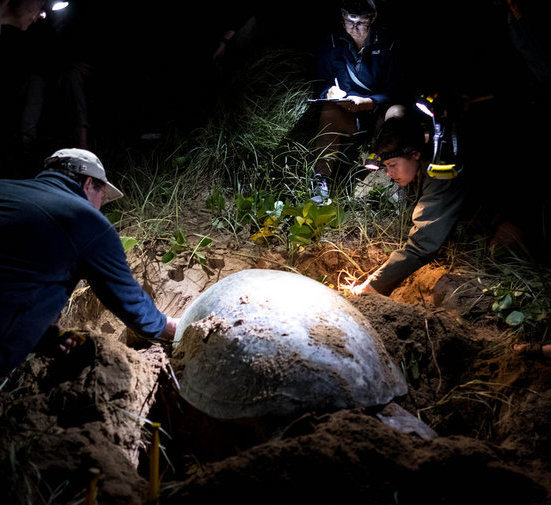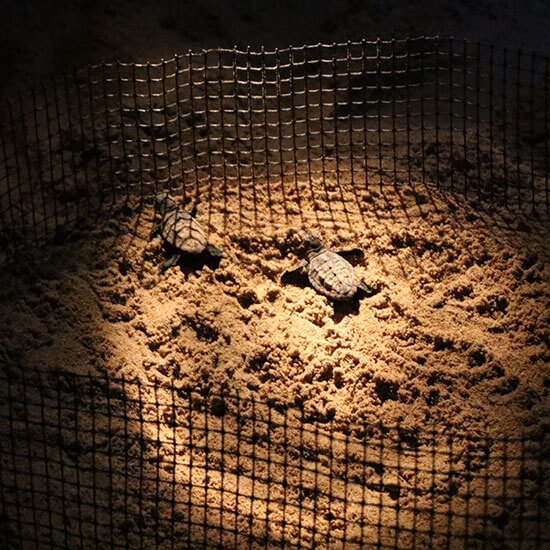Blair Witherington manages sea turtle programs for Disney’s conservation team. He helped to kickstart The Low Glow Project created by The Prince’s Trust Australia, Greenfleet and Walt Disney Company Australia in order to educate community members on how they can help loggerhead turtles. After receiving degrees in aquatic ecology and biology, Blair completed a doctorate in zoology and began traveling the globe to understand and conserve sea turtles, becoming a world expert on these compelling marine animals. His expertise includes how light cues are used at night by nesting and hatchling sea turtles, and how they can be protected from harm by managing artificial light sources near nesting beaches.


The Low Glow Project

The issue
The Loggerhead turtle is one of the most iconic species of the Reef, but it is under serious threat and is classified as endangered in Australia. Disturbances to hatcheries during breeding season is a principal issue. As only one in 1,000 hatchlings makes it to the age of 30, when they become mature and lay their own eggs, survival rates for hatchlings are crucial. Turtles cope with pressures from a shrinking number of places to nest, but a huge problem is light - it can turn away nesting turtles and makes hatchlings go the wrong way.

Impact on the Reef
Loggerhead turtles are found in all tropical and subtropical oceans. They inhabit subtidal and intertidal coral and rocky reefs and seagrass meadows as well as deeper soft-bottomed habitats of the continental shelf. Loggerhead turtles are an important part of the Great Barrier Reef’s biodiversity. Because female turtles return to nest in the area where they hatched, it is highly unlikely a population that has ‘died out’ would be recolonised by turtles from another population somewhere else in the world.
Action being taken
The Low Glow Project was created by The Prince’s Trust Australia, Greenfleet and Walt Disney Company Australia, with support from local council, schools, and the Mon Repos Turtle Centre. Working with the Bundaberg community, the project aims to reduce lighting via a community engagement and education project and a reforestation project. The project encourages residents to “dim their lights” during turtle breeding season. It also works with local schools to encourage students to take action to support turtle conservation, like turning outside lights off and closing curtains. Education packs are currently in development, for circulation at the start of the hatching season in November.
- 80,000trees planted in the Barolin Nature Reserve
- Provided a “green curtain” buffer to protect the Mon Repos turtle rookery from light

Simple actions can have significant impacts on the survival of these turtle species. There are numerous models where communities like Bundaberg have come together to manage light pollution. The cooperation comprises conservation actions that have benefits to individual households, to the community, and to the valuable natural resource represented in the magnificent marine animals that share local beaches.

With enough support, this project will:
- Buy more land to plant native trees around the Mon Repos site to protect hatcheries through regeneration programs
- Conduct a comprehensive lighting audit to identify best practice measurement of light glow impacts on turtles
- Improve filtration for nutrient and sediment run-off through regeneration activities
- Strengthen local tourism and employment opportunities
- Serve as a model for towns to effectively utilize environmental conservation for regional economic development
Unite for the reef.
Together, we can ease the pressures that the reef faces - but we need your support to do it. Because it’s only when we’re united as Citizens, that our individual actions can come together to make a real, physical impact on the Great Barrier Reef.



